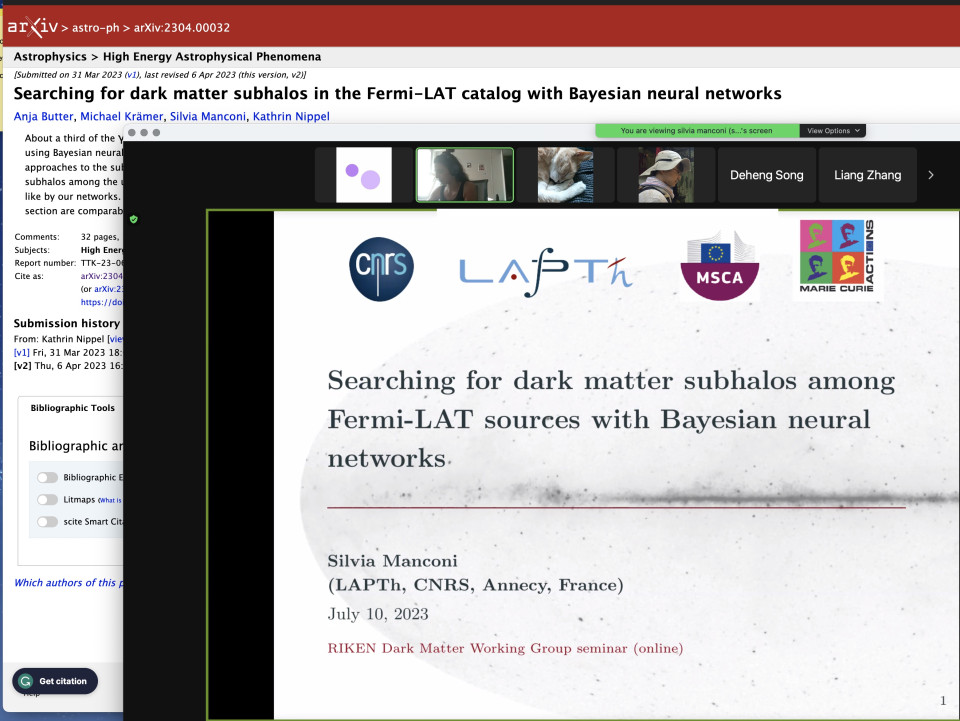DMWG Seminar by Slivia Manconi on July 10, 2023
As a nature of dark matter that feels gravity, dark matter in our Universe forms halos, which are gravitationally-bounded macroscopic structures. The halo structure is highly hierarchical and the halo of our Milky Way, for example, hosts many subhalos inside. However, smaller halos below a certain scale could not be visible because they cannot host galaxies.
If we look at the sky in gamma-ray wavelength, there are lots numbers of bright sources. Most of them are so-called active galactic nuclei (AGN), which are related to the powerful jet activities of black holes. A certain portion of point sources are not categorized yet. They could be AGNs, while it is also possible that they are bright due to DM annihilation occurring in compact and small subhalos in our Galaxy.
Neural networks, which are tools we have obtained in this era, powerfully help us to obtain insights into the properties of unknown gamma-ray sources. Properties of known sources such as spectrum and population serve as data for the supervision of the neural network. The trained network is used to look for outliers in the gamma-ray unknown sources which can be candidates for subhalos emitting gamma-rays by DM annihilations. In this way, a conservative upper limit on the annihilation cross-section of DM is derived.
The scheme is highly flexible and has many possibilities for extensions. In the near future, a huge amount of data, which is far beyond human ability to analyze all, from experiments in multiple wavelengths and probes should appear. The future of DM study assisted with machine learning should be bright.
Reported by Nagisa Hiroshima

